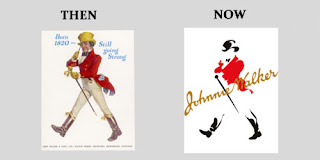The Kevin Roberts debacle this summer stirred the debate again, and got me thinking about my experience as a woman and a mother in the industry. Maybe it's because I am a bit longer in the tooth than the average in what is a notoriously 'young' industry, or maybe people have short memories, but I notice that the players in each new wave of the debate seem to think they're the first to raise the subject.
For example, there a well-reasoned and thoughtful article this week in Campaign by Nicola Kemp, but at some point it references 'Back in 2014, when the conversation about the lack of women in senior positions was just getting started.'
In fact, while I was at Saatchis, in 1990, our then Head of Planning, Marilyn Baxter, was commissioned by the IPA to undertake a study as to why so few women were in top management roles in ad agencies:
I remember the study highlighting the woeful lack of women generally in UK creative departments, which was related to the extreme laddish/macho culture of the time. Ten years later, Debbie Klein updated the study. In 2000, her findings were rather more positive. Women in advertising were optimistic about opportunities for the future. Women made up half of ad agency staff, and compared to FTSE 100 companies, were four times as likely to reach a board position.
But since then, I've found references to reports that suggest that, although the 50:50 split of employees is there, the % of women in senior management is only creeping up slowly - 20% in 2009, 22.4% in 2011 and 25% in 2014.
The Nicola Kemp article rightly focusses on motherhood and paints a picture familiar to many women in advertising. All is well and good until you have children. Unless you are extremely lucky to work for an enlightened agency, or you take the decision to leave the upbringing of your children to your partner, or maybe a series of nannies, you are likely to meet what's described as 'toxic environment.'
And what's particularly alarming for agencies is that client companies are far more on the ball when it comes to flexibility for working parents.
I don't like to be cynical, but I do wonder if, as long as agencies keep up their 'working relatively young (cheap) people all hours of the day and night to keep the client happy' business model, things will not change for mums in advertising.
And the agencies will miss out on a wealth of insight and wisdom - and potentially great creative ideas.























